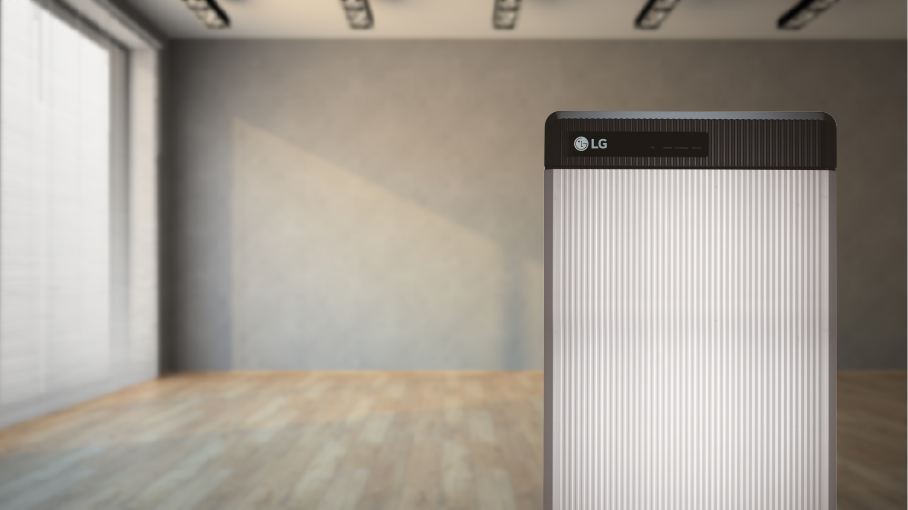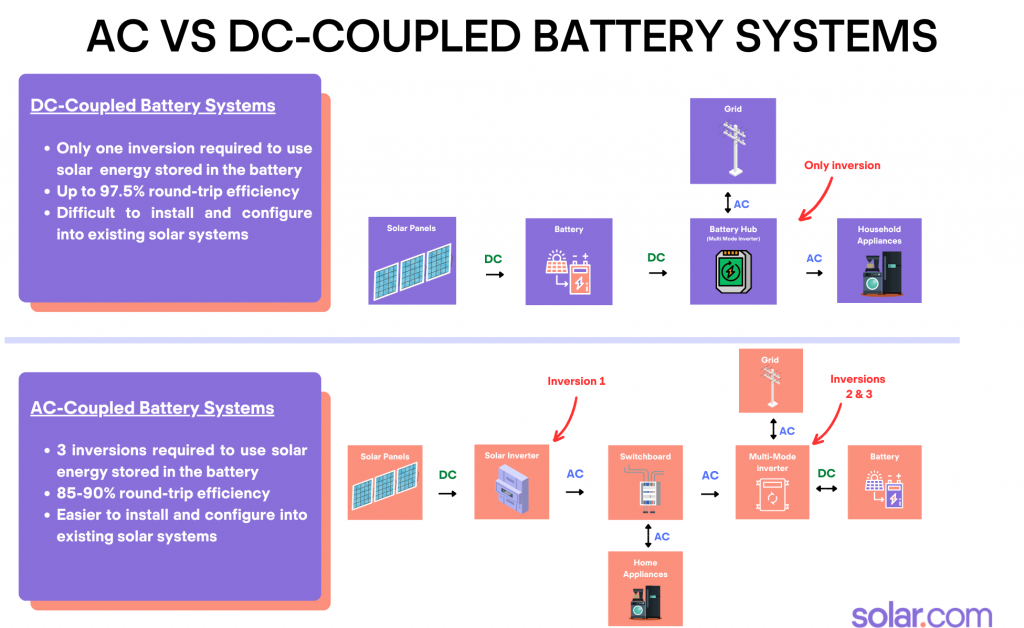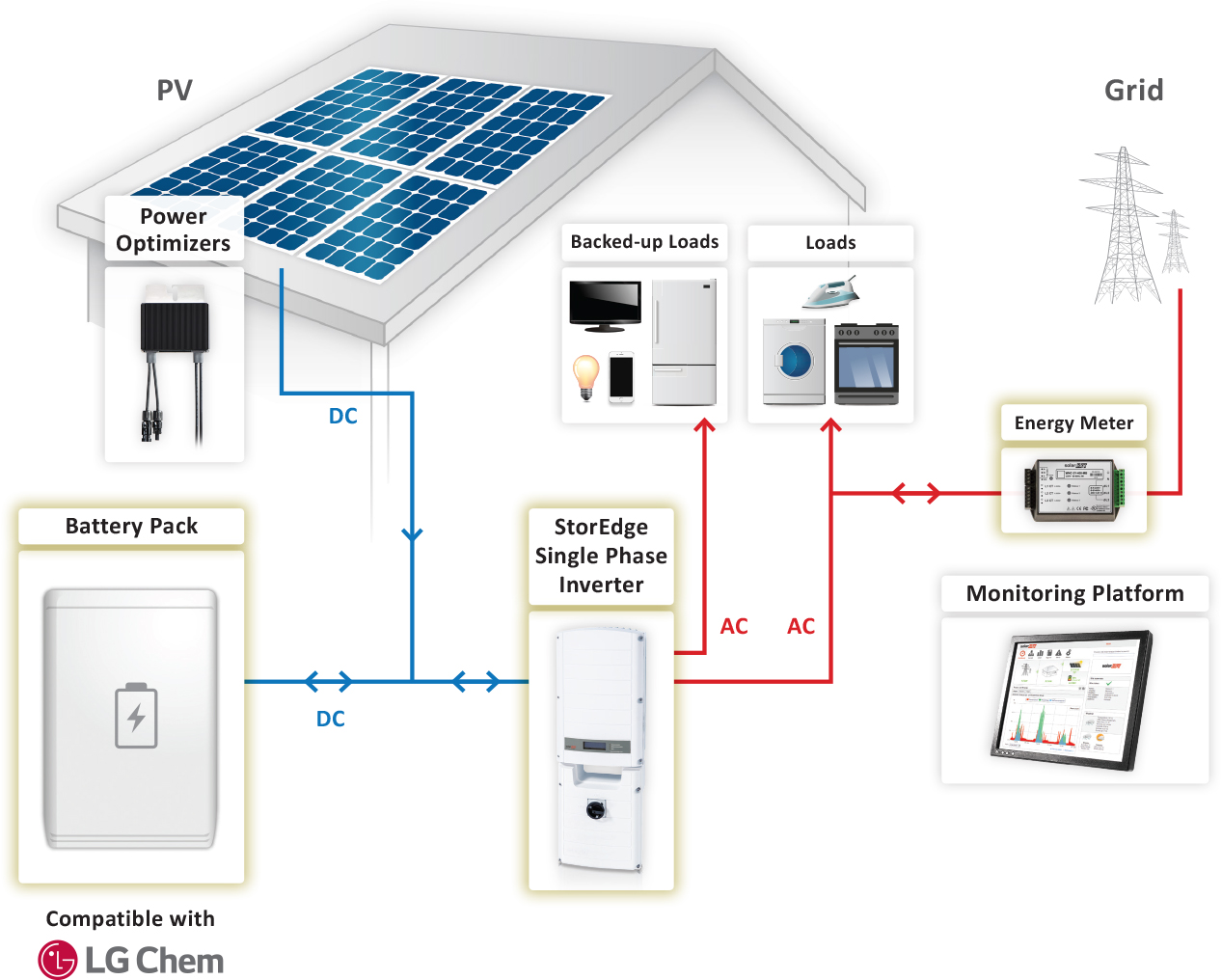See how much solar panels cost in your area

Please enter a valid zip code.
Zero Upfront Cost
Best Price Guaranteed
![]()
![]()
Solar Learning Center > Solar Battery > LG Batteries
LG Batteries

With volatile energy prices and frequent power outages, more homeowners are looking to battery storage to lower their energy costs and provide backup power.
LG has long been a household name for electronics and has two main offerings when it comes to residential battery storage that appear to be coming out of two separate divisions of the company.
- The RESU10H Prime & RESU16H Prime out of Energy Solution ESS Battery Division of LG Chem
- The Home 8 Energy Storage System out of the LG Electronics division
In this article, we’ll explore both of LG’s solar battery offerings, beginning with a quick recap of how LG got into the residential energy storage business.
Get multiple quotes for battery storage solutions here.
LG Solar Battery Basics
LG is one of the leading companies in the home battery industry. While most homeowners are familiar with LG’s electronics and home appliances, fewer are aware of the industry-leading home battery storage products that LG offers.
LG Energy Solution is a subsidiary of parent company LG Chem, which has extensive experience manufacturing lithium-ion batteries. LG Chem supplies battery packs for some of the most popular electric vehicles in the world, including the Chevy Bolt.
Launched in 2021, the LG Chem RESU10H and RESU16H Prime were the company’s best DC-coupled batteries to date and offered compelling alternatives to the Tesla Powerwall.
Fun fact: RESU stands for Residential Energy Storage Unit.
In September 2022, LG Electronics launched the Home 8 residential energy storage system, an AC-coupled battery with a built-in inverter.
LG’s home batteries provide all the standard advantages of solar batteries, including backup protection against grid outages, time-of-use load-shifting, and greater energy independence.
Use the product specifications below to help you compare with other solar batteries.
Related reading: The 8 Best Solar Batteries of 2023 (and How to Choose the Right One For You)
LG Battery Specifications
| Category | RESU10H Prime | RESU16H Prime | LG Home 8 |
| Capacity (usable) | 9.6 kWh | 16.0 kWh | 14.4 kWh |
| AC/DC | DC | DC | AC |
| Round-trip efficiency | 97.5% | 97.5% | 90% |
| Max Output | 5 kW continuous / 7 kW peak | 7 kW continuous / 11 kW peak | 7.5 kW continuous / 8 kW peak |
| Stackable output? | No | No | Yes |
| TOU load-shifting? | Yes | Yes | Yes |
| Warranty | 70% capacity retention after 10 years | 70% capacity retention after 10 years | 70% capacity retention after 10 years or 59.8 MWh throughput |
| Spec Sheet | LG Chem RESU10H Prime Spec Sheet | LG Energy Solution RESU16H Prime Spec Sheet | LG Home 8 Spec Sheet |
| Cost (before incentives) | $9,000-$11,000 | $11,000+ | $10,000-$12,000 |
Let’s take a closer look at what some of these specifications mean.
LG Solar Battery Key Features
The RESU10H Prime, RESU16H Prime, and Home 8 are similar in several ways. However, there are some key differences that should be considered when you’re shopping for home battery storage.
DC vs AC
Unlike the Tesla Powerwall, the LG Home 8, and other popular battery options, the RESU10H Prime and RESU16H Prime are DC-coupled batteries. One of the biggest advantages of a DC battery is that it has better round-trip efficiency than an AC battery.
The difference is due to the number of times electricity is inverted from DC to AC (and vice versa) before it is used to power the home. Each time the current is inverted, a little bit of energy is lost to heat, which reduces the round-trip efficiency.
In a DC-coupled system, there is typically only one inversion. In an AC-couple system, there are typically three inversions.

While DC batteries are much more efficient, they can be significantly more difficult to add to existing solar systems. So, if you already have solar panels, the AC-coupled Home 8 is likely the more cost-effective LG battery option, even if it isn’t as efficient as a DC battery.
Inverters
Being a DC battery also means that the LG RESU 10/16 Prime requires particular inverters that allow it to pass through DC power from the solar panels directly into the battery.
The best of these inverters on the market today is the SolarEdge StorEdge, which provides a single-inverter (DC-coupled) solution for both a solar PV system and a home battery, reducing energy loss and overall system costs.

But since it is a DC battery, many inverters will not be compatible with the LG RESU 10H, including all microinverters.
As a result, DC batteries like the LG RESU10/16 Prime are more difficult to retrofit to existing solar systems, as doing so requires replacing the existing solar inverter. If the existing system uses microinverters, then it won’t be possible at all — in which case the Home 8 is an obvious alternative.
Connect with an Energy Advisor to discuss your battery and inverter options.
Stackable output
Being a DC battery also means that the LG RESU10/16 Prime’s output cannot stack, so the system’s output is limited to 24 amp circuits and below, even with multiple batteries.
Therefore, while buying two batteries will increase the system’s backup duration in an outage, it will not increase the amperage of the circuits that can be backed up.
On the other hand, the LG ESS Home 8 is stackable and homeowners can combine up to four units to increase their power output and gain up to 57.6 kWh of usable energy.
So, if you have larger loads to power in backup mode, like an air conditoner, stacking two or three Home 8’s is likely a better option than the RESU 10/16 Prime.
Cooling
The LG RESU10/16 Prime is passively cooled, as opposed to some other options like the Tesla Powerwall that are liquid-cooled.
As a result, the thermal management in the LG RESU10/16 Prime isn’t quite as strong, so it’s best to have this battery installed inside a garage and/or out of direct sunshine and heat.
The LG Home 8 is has a forced air cooling system, which is more effective than passive cooling and less effective than liquid-cooling. This likely won’t be a make-or-break feature for most homeowners, but it’s worth considering if you live in extremely hot climates.
LG Battery Costs
Finally, we come to LG’s biggest competitive advantage — price. Battery prices vary based on size, technology, and scope of project, but, in general, LG batteries are very competitively priced.
The LG Chem RESU 10H typically runs about $9,000-$11,000, fully installed and before the 30% federal tax credit for battery storage. That includes all of the ancillary components needed to make the battery function — see our article on solar battery pricing for more information about the factors that contribute to battery pricing.
Given that the Tesla Powerwall typically runs about $12,000-$14,000, the LG Chem can undercut Tesla’s pricing by 20-30%. While it does have less capacity (9.3kWh vs. 13.5kWh), it will still meet most homeowners’ backup and load-shifting needs just fine, and do so at significantly lower cost than the Tesla Powerwall.
LG Home 8’s typically cost around $10,000 before installation and incentives. After installation and the 30% federal tax credit, we estimate the average total project cost to be around $9,750 — or around $680 per kWh of capacity.
This pricing makes it the most affordable mass-market solar battery in the industry, so for the value-oriented shopper, LG batteries are a standout option!
If homeowners buy multiple batteries at the same time, installers will typically reduce the cost of the subsequent batteries, since some of the equipment can be economized.
Beginning in 2023, the 30% federal tax credit applies to battery storage whether it’s connect to solar or not. That’s in addition to state and local incentives like California’s SGIP program with rebates up to $1,000 per kWh of battery storage installed.
The Bottom Line
Overall, the LG Chem (aka LG Energy Solution) RESU10H Prime and RESU16H Prime are among the best solar battery options in the entire industry.
LG Chem is one of the largest lithium-ion battery producers in the world, so their products are extremely vetted and manufactured to the highest standards. The pricing on the RESU 10H Prime also undercuts every competitor by a significant margin, so from a value perspective, LG’s offering is unbeatable.
Related Articles
Home Battery Backup Main Event - sonnenBatterie vs. LG
We recently wrote an article comparing Sonnen’s Eco and Teslas’s Powerwall 2, but now we’re going to see how the Eco stacks up against the...
See how much solar panels cost in your area.

Please enter a valid zip code.

Please enter a valid zip code.
Zero Upfront Cost. Best Price Guaranteed.





